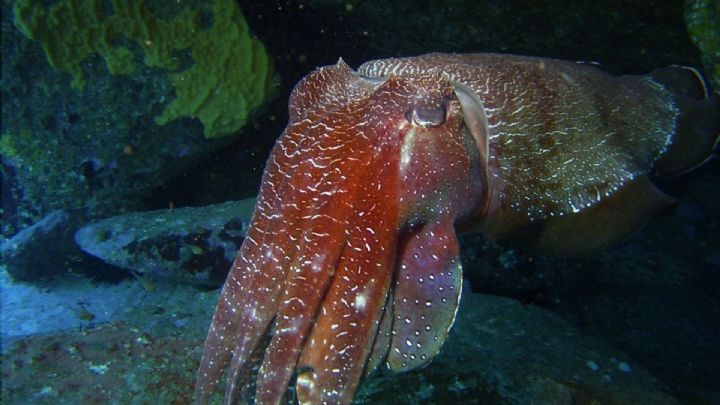
Located only a few hundred metres off Royal National Park, south of Sydney, Barrens Hut is named after a squatter's hut built into the side of the rocky cliff. Mainly formed by a dramatic drop-off from the reef top, the reef extends from the rock platform out to the site, with the top at a depth of 12 to 16 metres. The reef drops off to a sandy bottom to a maximum depth of 28 metres. The walls are completely coated with plant and animal life. A huge abundance of fishlife, including the famous blue groper and yellowtails. Barrens Hut usually has good visibility, with an average visibility of about 15 metres. Around the large boulders, the nooks and crannies are full of eastern blue devils and cuttlefish can be found with old wife, bream, snapper, moasic leatherjacket and numerous other fish. There is so much to see at Barrens Hut, one dive is not enough. Source: http://members.ozemail.com.au/~diving/articles/publish.htm
Next Trip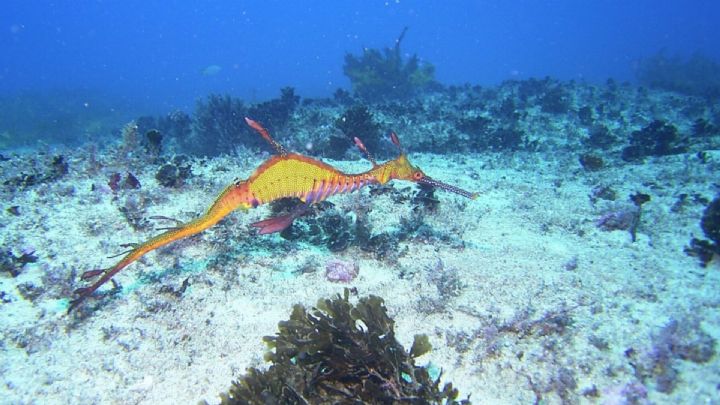
Located on the northern side of the North Head Peninsula this is a great site to see Weedy Sea Dragons, Cuttlefish and Wobbegong Sharks. Port Jackson Sharks are a common sight in winter. Blue Fish Point is considered a relaxing dive and is often where we hold our Search & Recovery Workshops. Dive Rating Green - Max Depth 24M
Next Trip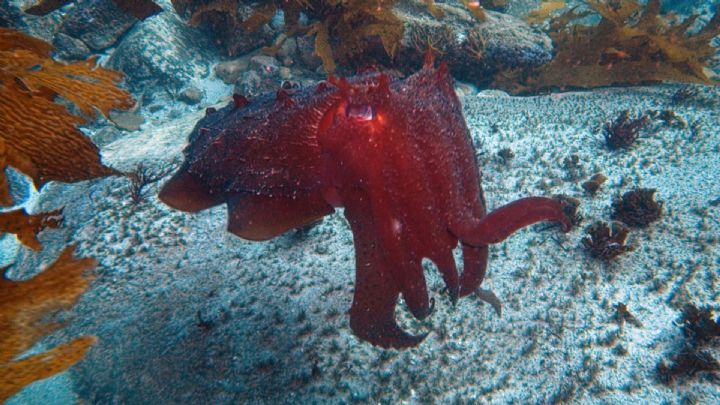
Blue Fish Wall is the outer section of Blue Fish Reef. The wall reaches down to approximately 25 metres. It has many large boulders, overhangs, swim-throughs and drop offs that make this an exhilarating dive with lots to see and do. All along the wall you can see sponges, ascidians, sea squirts, nudibranch and all sorts of other sea life. The fish that frequent this site are cuttlefish, mullet, wrasse, leatherjackets, sea perch, bullseyes and goatfish.
Located at the mouth of the harbour north head ?
Averages between 6 meters down to 30 meters. This location is renown for great sponge growth below 12 meters and in the shallower areas big boulders and swim throughs. You will see lots of leather jacket, blue grouper, giant cuttle fish, and the occasional big bull ray plus your typical temperate water species and viz averages around 10 to 12 meters here and can be as good as 25 meters.
Chapel Steps is an area of flat rock that descends in stepped ledges to the sand at a depth of about 15 metres. A maze of gullies and hidden swim-throughs, it's an area where giant cuttlefish are frequently spotted hiding beneath the ledges. Among the profusion of sponges and soft corals, divers can still, occasionally, find relics of Sydney's maritime disasters. The marine life and fish variety alone is worth the dive. Source: Pro Dive Manly
Next TripOld wharf pilons with great sponge growth and home to the Seahorses. This site is excellent for all those Macro lovers!
Next Trip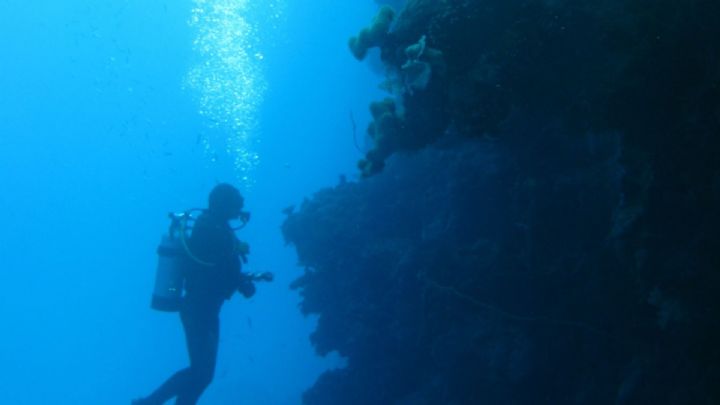
Colours Reef is a wonderful example of Sydney's diverse coastline with lots of soft corals. The top of the reef starts at 22m then steps all the way down to a 30m sand line. The fish life here is a little different to other shallower sites around Sydney, with large Cuttlefish, Big Schools of King Fish, Eastern Blue Devil Fish and Seapike just to mention a few. As this is one of our deep sites you will need to have an Advanced Open Water Certificate and is often a site we use to teach our Deep Diver Workshop.
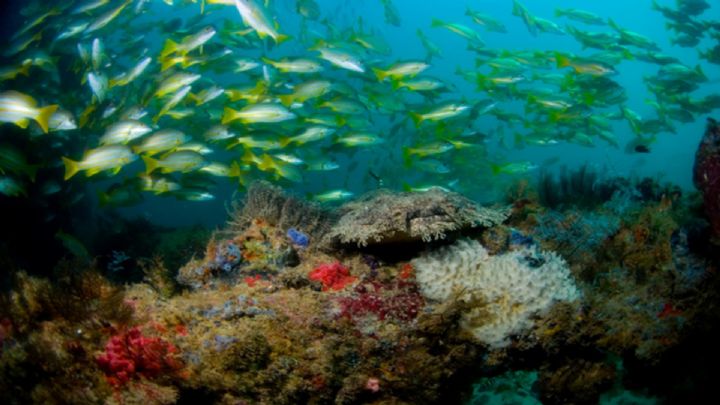
Dee Why Wide is one of Sydneys premier boat dives. There is a prolific amount of marine life here. You can get down to depths as great as 37 metres in some spots due to the large gullies and cracks in the rocky bottom that are accessible to divers. As you explore the channels in the rock you will come upon kingfish, leatherjackets, yellowtail, and seapike, perch, bullseyes, cuttlefish, butterfly and black-banded perch, sergeant bakers, red rock cods,gropers and an abundance of eastern blue devilfish. This is an ideal dive site for Advanced or Deep Divers.
Next Trip
Diamond Bay is a relatively easy dive that begins at a depth of about 16 metres and reaches down to 22 metres. It consists of a reef that descends in shelves that boulders rest on. Around and under these boulders is a sizeable collections of sedentary fish life. You can expect to see cuttlefish, moray eels, hawkfish, shrimp, nudibranchs, rays, and wobbegongs.
Next Trip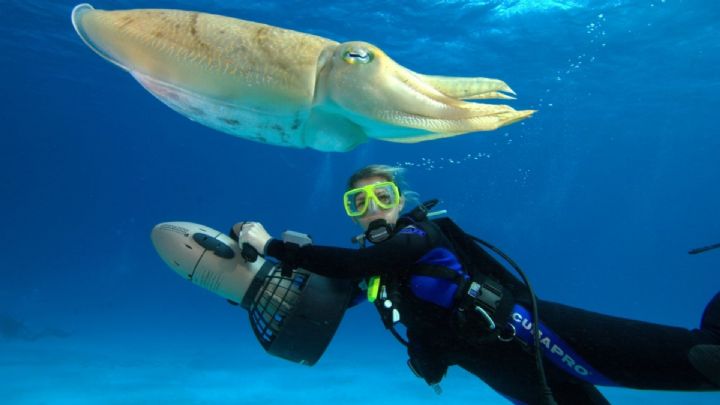
Flagstaff
Flagstaff is an excellent shallow dive, starting around 5 metres and descending to 12 metres. Sandy bottom with rocks and boulders up to the shoreline. Flagstaff is a hive of activity for the macro world. As you dive north you can see kelp, ascidians, sponges and all sorts of sea life around the rocks. Octopus, port jackson sharks, rays, cuttlefish, schools of fish and nudibranchs can be found at this site. If you are really lucky, a fairy penguin might swim past you underwater as the colony is close by. Pro Dive utilise this site for our enriched air workshops.
Next TripHole in the Wall can be done as a shore dive (is you like long walks along rocks!!) or as a boat dive (luxury!) - it is one of Sydney's best and least visited sites. Sea Life V does trips to this site - so don't miss it!
Next TripLilli Pilli, Sydney
Next TripLocated North of Sydney Harbour. The main site at Long Reef is located along a large rock wall and drops to 15 to 20 metres. There is a huge rock formation that has a large swim-through running from east to west called The Cathedral. The cathedral one of the sites highlights is formed by two massive boulders leaning against each other and is covered in sea tulips, sponges and bryozoans. The Cathedrals ceiling is always abundant with sealife. Once you reach the western side it is home to masses of fish; bullseyes, roughies, yellowtail, pike and tailor. There are plenty of starfish, large cuttlefish, wobbegongs and Port Jackson sharks. We find visibility gets much clearer during winter so keep this site in mind for a mid winter dive. Swimming north of the cathedral and following the wall you come across large gutters, frequented by young grey nurse sharks. Note - Watch for strong currents.
To find out more please check this link out
http://www.youtube.com/watch?v=7Q6Gxy7rhYw
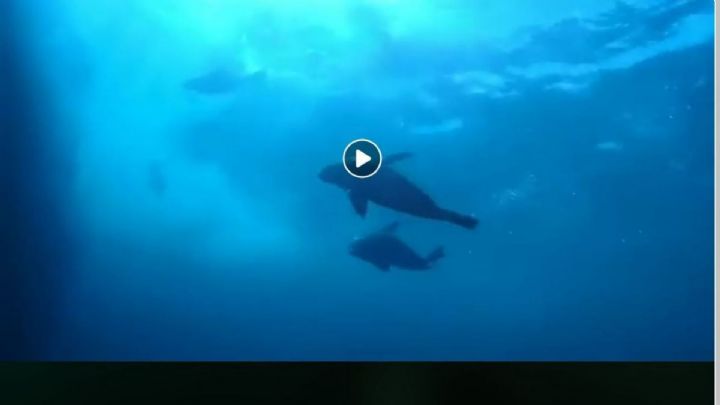
Located of South Head, Macquarie Light House offers a great dive and we often see a group of seals.
Next Trip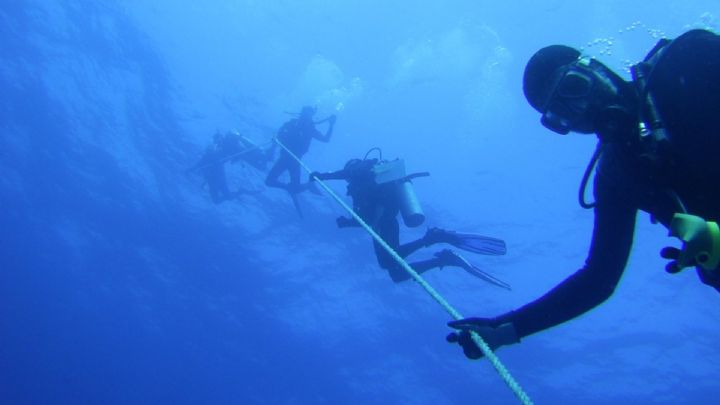
Magic Point is easily one of Sydney's most iconic dive sites. It is renowned for the large ledge/cave along a wall that starts at 7m and reaches 16m at its base that is home to some truly famous inhabitants, Sydney’s grey nurse sharks.
Historically, the cave has been home to in excess of 30 sharks at a time and has seen them congregrating even to this day. In 2013, Magic Point was designated a protected area from fishing to help the grey nurse shark numbers recover.
But sharks are not the only sea life to discover - divers can see wobbegong, Port Jackson sharks, cuttlefish, bull rays, yellowtail, weedy sea dragons and pineapple fish. In the right season, you might even catch sight of humpback whales and bottlenose dolphins.
Next TripInformation Coming Soon!
Next Trip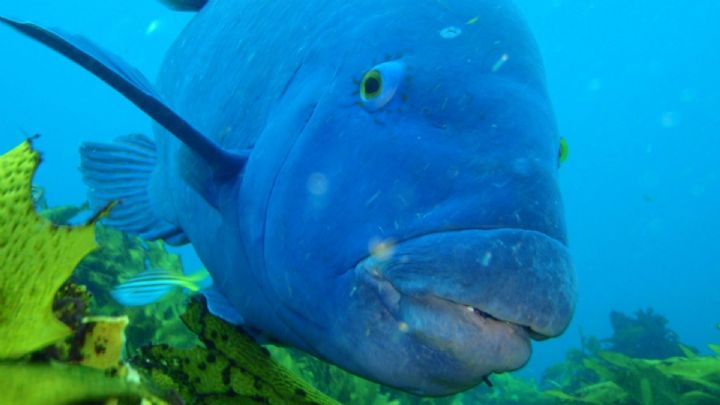
Located off the northern end of Manly Beach, the top of Manly Bombie is in 10 meters and goes down to a maximum depth for 16 meters. There are swim-throughs and lots of fish including Schooling King Fish. There is lots of cool Macro stuff too, an ideal site for the avid underwater photographer. Snap away and enjoy a relaxing green rated dive.
Next Trip

The shallow section of this dive has some fantastic fishlife, with prolific numbers of yellowtail and silver sweep. You can get right up under the rock platform in about 5-8 metres.
Deeper, the reef is composed of boulders running down to the sand at about 20 metres. On the sand you might be lucky and find some sea dragons. The reef away from the sand has overhangs and there is at least one large swim-through.
There are sometimes some wobbegong sharks and along the deeper parts of the reef you will see large numbers of wrasse and leatherjackets, especially black reef leatherjackets as well as bream. There are also a couple of very large and very friendly blue gropers and also at least one huge ray resident on the sand.
In the very shallow areas (less than 7-metres), there is usually prolific fishlife. These fish include seapike, sweep, yellow-finned pomfret, one-spot pullers, luderick, eastern rock blackfish and many other species.
An excellent dive location, but you need calm seas to get there so it is weather dependent.
Next TripInformation Coming Soon!
Next TripA Marine Protected Area north of a line drawn from North Head to grotto Point.
Next Trip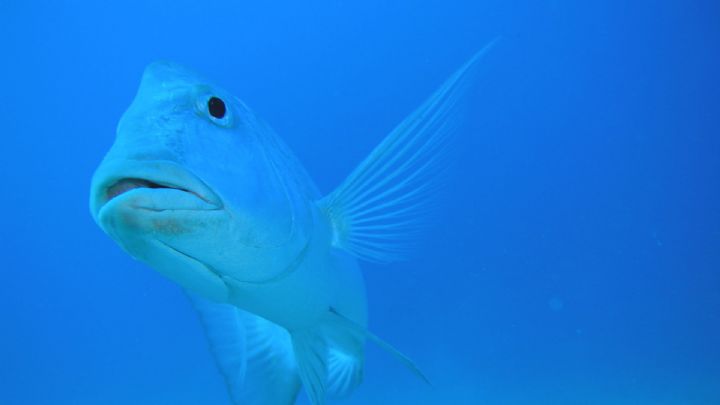
Located right on the outside point of North Head is a dramatic wall that drops about 13-18 meters. Considered a breeding ground for the Blue Groper, it not uncommon to see juvenile Blue Groper in abundance. Wobbegong and Port Jackson Sharks are regulars in winter, with Black Stingrays an occasional visitor to this site. A good schooling area when the pelagic are running, including King Fish, Yellowtail Scad and Australian Salmon. North Head Wall is considered and easy dive but conditions do need to be calm, making it a great winter dive as we usually have prevailing westerly winds.
Next Trip
The dive site itself is a number of reefs which run in an arc from the shore, first towards the east and then north-east and finally north. The reef is about two to three metres high and has numerous low caverns or overhangs that are home to many beautiful fish including the occasional Blue Devil. This site is also home to the friendliest blue gropers that you will ever find on a shore dive, almost to the point of being annoying. The site is fairly protected from southerly winds and seas, but very big swells from that direction and basically anything from the east or north can wipe out this site from an entry/exit point of view. Oak Park can also be affected by stormwater runoff from Port Hacking during periods of heavy rain, the mouth of which is only a few hundred metres away. Visibility can range from 3 up to 15 metres, averaging 7 to 8 and is marginally better on an incoming tide.
The entry and exit points can be made from two spots. It is common to enter the water on the right hand side of the pool from the beach, however if the tide is a little lower you can easily enter from the north east corner of the pool.
If you enter from the corner of the pool, swim out about 20 metres to the south-east before descending. Keep an eye on the seafloor as you snorkel and you will pass over the edge of the wall. Descend here.
If you are entering through the southern side of the pool, take care when getting in and out as the water is normally very shallow here and there are many rocks on the bottom. Snorkel out at least 10 metres past the end of the pool before dropping to the bottom. The depth here is about 3 metres. Start the dive to the north-east and you will soon encounter the wall at about the same spot as previously mentioned.
A truly magical rocky reef dive accessible only by boat. Under the towering curve of Sydney Heads, the rocks jumble into the water and slowly give way to sponge gardens and a sandy kelp bottom. Old Mans Hat suits all levels of experience. The area is rocky with a few sandy patches. Sponges and soft coral can be found on the rocky bottom. Expect to see blue groper, cuttlefish, lizard fish, yellow tails, nudibranchs, pygmy leatherjackets, shrimps, ascidians, sponges, sea squirts and all sorts of other temperate marine life.
Next Trip
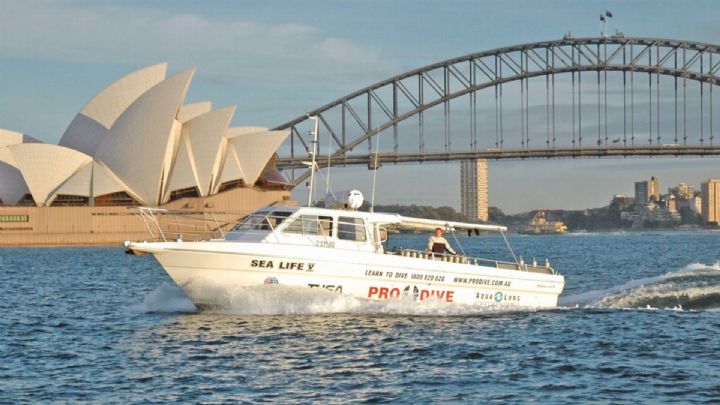
Sealife V will be out of the water for a refit.
Next TripA red flag flies on top of a sheer cliff above a small bay. That flag is the namesake for this dive site. The bottom ranges from 14-24 meters where you anchor. There is a reef there that is home to a wide variety of fish species. These include red morwong, yellowtail, seapike, and one-spot pullers. Schools of bream and snapper also frequent this area. Large rocks along the reef also provide an ideal location for the marine life to call home. There is an assortment of sponges to be seen here as well. If you poke around you can find several tunnels and caves underneath the rocks. Wobbegongs and Port Jackson sharks can be found hiding out in these areas depending on the time of year.
Next Trip
Another truly magical rocky reef dive accessible only by boat. Like Old Man's Hat, under the towering curve of Sydney Heads, the rocks jumble into the water and slowly give way to sponge gardens and a sandy kelp bottom. Rock Fall is great for those undertaking their advanced certification as the 30m depth limit is achievable, but it suits all levels of experience. The area is rocky with a few sandy patches. Sponges and soft coral can be found on the rocky bottom. Expect to see blue groper, cuttlefish, lizard fish, yellow tails, nudibranchs, pygmy leatherjackets, shrimps, ascidians, sponges, sea squirts and all sorts of other temperate marine life.
Next Trip
Again simple navigation, down the anchor rope and left or right depending on the directions for the boat captain. Expect to find kelp, weedy sea dragons, leatherjackets, lizardfish, rays, moray eels, octopus, pygmy leatherjackets (always a favourite) - as well as schools of yellowtail and bream.
Under rocks and ledges look for wobbegongs, sea hares at shallower depths, nudibranchs, sea horses, shrimp and hermit crabs - not leaving out the sponges, bryozoans, ascidians, sea squirts and, of course, the sea stars and sea urchins!
Source: http://members.ozemail.com.au/~diving/articles/publish.htm
Next Trip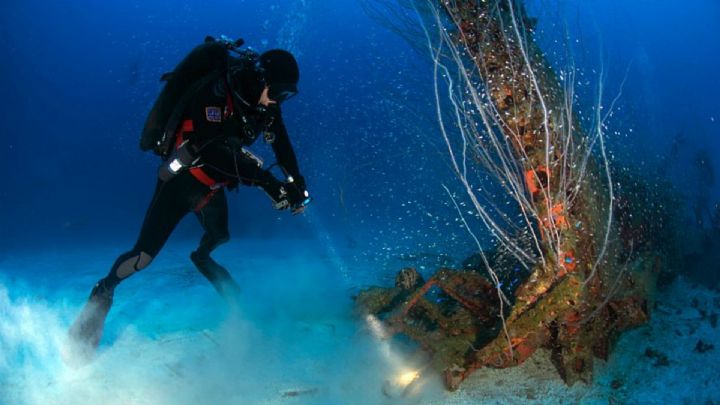
Located off South Head it is a relative easy site to access. The Shepherd can be found at a depth of 27M, so you are required to be an Advanced Open Water Certified diver to visit this site. The site consists of parts of the Royal Shepherd, rather than the entire ship itself. All that remain are the engine block, driveshaft, prop and boiler. There is sporadic fish life around the wreck and it is home to some Moray eels.
Next Trip
Find out more from the Australian Museum's Living Harbour website.
Next Trip
Enter from the shore along the right hand side of the beach (facing the sea). Keep the rock wall on your right as you head out and on your left as you head back - an easy dive site to navigate. As with any site, Shelly Beach is weather dependant - generally protected during easterly winds, which makes it diveable when a lot of other sites in the area are blown out. Viz can vary from 3 to 15M but is usually clearer during the winter months. On a good day, this is a spectacular site!
The best of the site is further out than most people get to and you do need reasonable air consumption to reach it. Swim out following the rock wall to your right, until it turns northwards and starts to peter out. Take a heading and keep going following the remnants of the rock wall on the sea floor and you should come to a kelp bed. Weedy seadragons are frequently found here and the depth should not exceed 12m.
Along the wall and amongst the big boulders, other marine life seen regularly is the divine eastern blue gropers (wrasse), schools of yellowtail and big eyes, mados and often pike. Red Morwongs, goatfish in the sandy area, flatheads and often ludericks and old wives. Under ledges shrimps galore and often juvenile lionfish. Port Jackson sharks and giant cuttlefish are common in season and wobbegongs sleep in crevices and under the big boulders.
When the Sealife V visits South Head it pulls into a shallow area near the rocks. Divers get into the water and drop down to a rocky bottom at 8 metres. From here you can make your way down to a maximum depth of 14 metres. Along the way there are a series of overhangs where you can normally find cuttlefish and lots of octopus. There is also the usual assortment of fish swimming happily through the waters. Its a great, easy dive for beginning and intermediate divers out on the boat.
Next Trip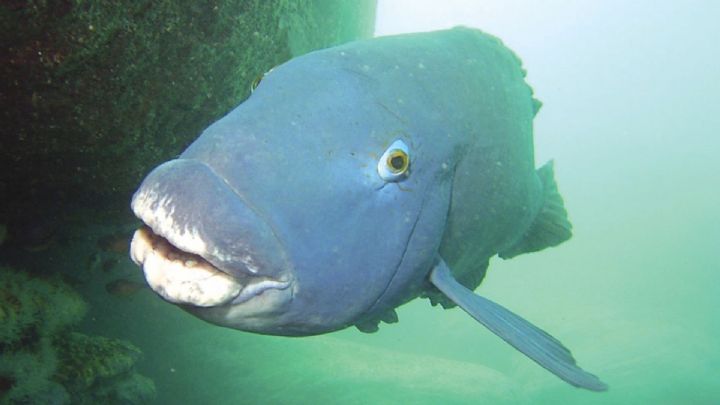
We rate this dive for the tricky entry point and long walk to the site. You will need to be fit to participate in this dive and it is best to go with a guide. It is well worth the effort, one of the most pristine dives in Sydney. Along the sandline you will see lots of boulders, kelp and overhangs that are full of fish life.
Next Trip
The site is located at the mouth of the harbour north head and extends for about 700 metres. This location is renowned for great sponge growth below 12 metres and the shallower areas consist of big boulders and swim throughs. You will see lots of leather jackets, blue groupers, giant cuttlefish, and the occasional big bull ray plus your typical temperate water species. Visibility averages around 10 to 12 metres here and can be as good as 25 metres.
Next TripThe Stack
A dive site located just off the headland at Dover Heights the stack is marked by the vent of the old sewerage treatment plant. The dive site is characterised by flat shelf like areas of volcanic rock formations stepping down to a maximum depth of 30m. The flat shelves consist of large areas of kelp beds where the cuttlefish love to hide and sand beds home to many port jackson sharks during the colder months.
The wreck of the Valiant is a wonderful dive site which PRO DIVE visits every month. The ship itself is an old tugboat that was 22.5 metres long and 5.4 metres wide. It was commissioned it 1945 and was used during World War II. The wreck was sunk in 1981 so it has had thirty years to let sea life accumulate around and inside of it.
When you dive the Valiant you descend down to 27 metres where the wreck is sitting upright. On clear days you can see down to the wreck from the surface. Once you get to the bottom you can swim around the wreck and view the heaps of soft corals and jewel anemones covering the ship. You can enter the wreck as well. The engine room, cabins, crew quarters, and bridge all are accessible and definitely worth a look.
The fish life that can be found in and around the ship include moray eels, gropers, yellowtail, white ear, bream, mado, stripey, bulleyes, sergeant baker, yellowtail kingfish, trevally, John Dory, blue swimmer crabs, and giant cuttlefish.
Next TripAbout 1 km off of Coogee Beach is a collection of rocks about 150 metres long and 50 metres wide. At high tide one can see these rocks poking out of the sea and as the tide goes down they get more pronounced. This is Wedding Cake Island.
As you descend you will see the reef drop off in shelves at 5m, 8m, 15m, 18m, and the rock sand line is at approximately 22m. The main wall is at the 15m mark and this is where heaps of sea squirts and several small gorgonians make their home. Along the wall you can also find overhangs and caves that provide shelter to the aquatic life.
Wobbegongs can be found here along with lots of other fishlife including yellow-banded seaperch, old wife, snapper, bream, the esteemed blue groper, combfish, six-spined leatherjacket, rainbow runners, kingfish, and schools of luderick that flock to the shallower waters. If you're lucky you may get to see the magnificent eastern blue devil or cuttlefish. There are also many species of nudibranch.